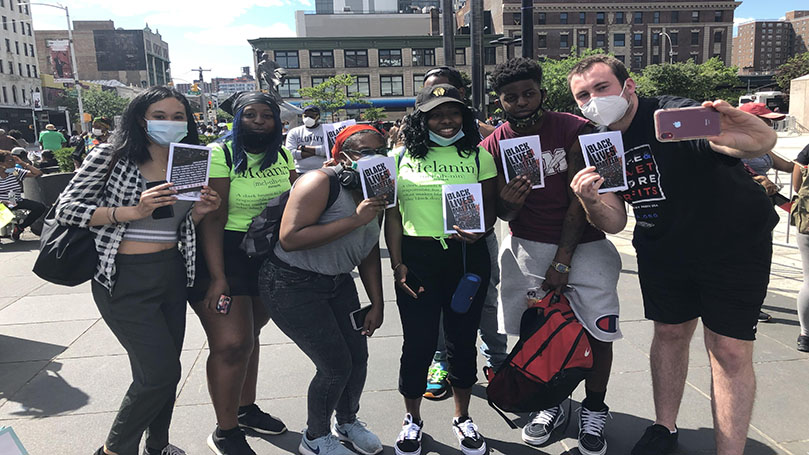
Editor’s note: This is the third printed and updated edition of the Black Lives Matter pamphlet.
Preface
These are difficult times: Our nation is in the throes of a triple-layered crisis of COVID-19, a deep economic crisis with 50 million unemployed, and an escalating nationwide struggle against the virus of racist police murders.
There is another dimension that negatively affects everything: we have a white nationalist, neo-fascist president in the White House.
These problems are rooted in a general crisis of U.S. capitalism.
But the thing that worries the ruling class most is the massive multi-racial, anti-racist movement that has exploded on the scene all across the nation. The latest figures I have seen show large powerful protests in nearly every state and in 300 cities. Millions continue to march from sea to shining sea.
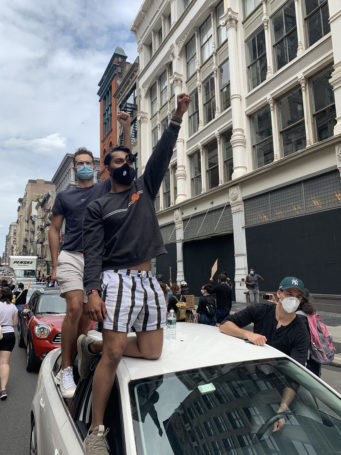 The capitalist 1% and their right-wing allies are not serious about eliminating racism—that is why they are engaging in a vicious campaign to slander, derail, and smash this historic movement. But the movement remains united and is growing.
The capitalist 1% and their right-wing allies are not serious about eliminating racism—that is why they are engaging in a vicious campaign to slander, derail, and smash this historic movement. But the movement remains united and is growing.
Trump and his white nationalist allies, who are armed, want to wreak havoc. They are deliberately trying to discredit this historic movement against racism and turn it into a gang of looters and arsonists. But it is not working. Shame on the fascists who are responsible. They should be weeded out and prosecuted.
Trump looked ridiculous to everyone when he attacked demonstrators at the White House so that he could stage his Bible-toting photo-op that the ministers of the church roundly condemned. That was as phony as his attack on Antifa. We need to be in solidarity with Antifa.
These right-wing provocations, aimed at identifying the peaceful vast majority of protesters with those who are looting and setting fires, must and will be defeated. As George Floyd’s brother put it, “We don’t have to loot and burn. We can win this fight. We have the numbers.”
With respect to some who are breaking into stores around the city, I take a different view. Let’s remember that people are trapped in desperate poverty and can’t survive. These are people without the basics of food and decent shelter. During the Great Depression, on the Iron Range in Hibbing, Minnesota, working families were starving and so desperate that they organized a looting of the general store to get food for their families. These were mainly white workers. That story was told to me by Gus Hall who went on to become the General Secretary of the CPUSA.
Today just like back then our people will not starve!
The Justice for George Floyd movement is winning. It forced Minnesota authorities to fire and arrest Derek Chauvin along with the other cops who aided Floyd’s public execution.
The protest also resulted in the appointing of Attorney General Keith Ellison as the head of the prosecution.
The tragic video of the callous murder of George Floyd, and linking it with Ahmaud Arbery, Breonna Taylor, Michael Brown, and Eric Garner, has given birth to this new movement. We extend our congratulations, solidarity, and support.
Among its just demands are:
- Defund the police: a popular demand for police departments not to be the largest item on municipal and state budgets;
- Set federal standards for police behavior;
- Establish local civilian-run police accountability boards with the right to discipline, fire, and prosecute police misconduct;
- Ban choke holds and strangulation holds;
- Pass a bill to make public the records of police brutality and use of lethal force;
- Trump must resign!
Let’s turn the marches in the streets to marches to the ballot box in November and beyond! Below, find our take on the Black Lives Matter struggle in New York and other cities. We look forward to your comments and feedback!
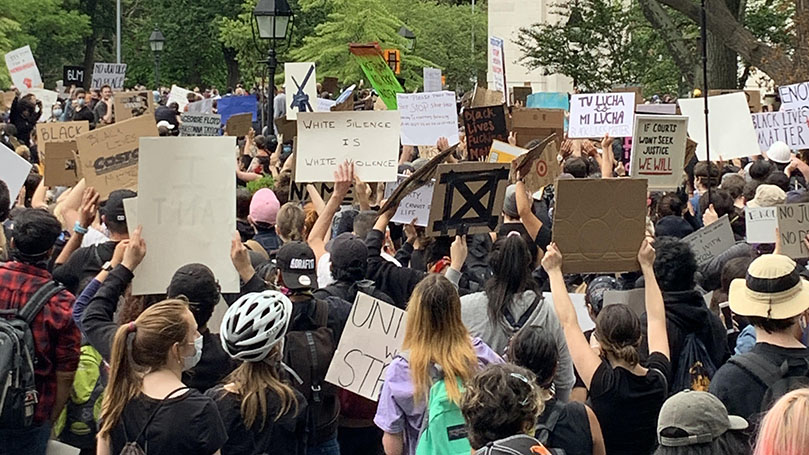
Where We Have Come From
With capitalism came modern American slavery and the government policy of racist oppression and brutality.
Our history as a nation shows capitalism and slavery are an especially toxic mix. It has taken tens of millions of lives over the centuries.
Turning human beings into commodities to be bought and sold and basically worked to death meant a level of viciousness, brutality, and suffering that humanity had never experienced. Maintaining this system required a reign of terror to try to prevent people from pursuing freedom.
The system of chattel slavery was defeated, but racial oppression remains a cornerstone of capitalist rule in our country. After the defeat of the old Jim Crow (U.S. apartheid) in the 1960s, new forms were created. The majority of African Americans remained segregated and unequal in most vital areas of life.
Jim Crow extended the reign of terror by keeping millions of African Americans and other people of color trapped in poverty, ill-housed, ill-fed, poorly educated, brutalized by the police, and incarcerated at the highest rate in the world.
All of this was not possible without systemic, structural racism, including a policy of racial exclusion, to make it work. Racial profiling in law enforcement and in private and public employment has a central place in a system of oppression that penalizes people of color with double and triple unemployment, poverty, and incarceration rates.
Holding Black folks in deep poverty and oppression, in order to keep people—especially working-class people—racially divided remains a basic part of U.S. capitalist rule. It is a central reason the ruling 1% can maintain their power and privilege. Most African Americans, Native Americans, Latinos, Asian, and Pacific peoples who find themselves trapped in a super-exploited, racially oppressed crisis state of existence are there not because they are childlike, criminal, inferior, lazy, unintelligent or violent or lack initiative and discipline.
It is the system of racial oppression and terror that’s primarily responsible, and this is what must be challenged. This should be the historic mission of all people of good will who want a democratic and humane society with economic and social equality and justice for all.
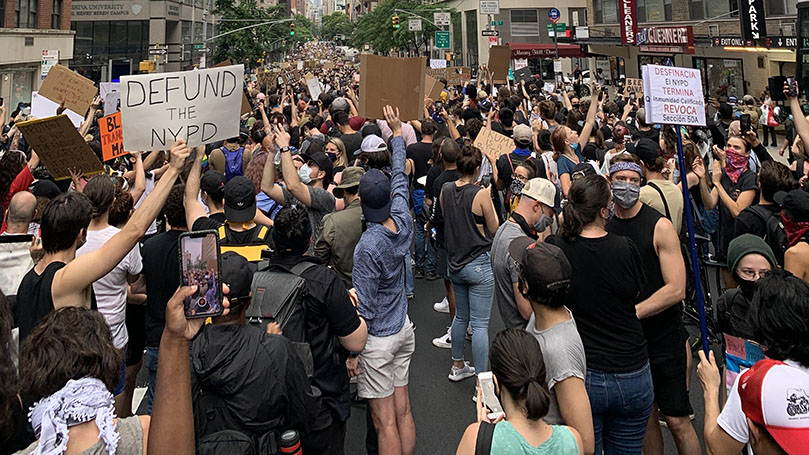
The New Jim Crow
Since Reagan’s election in the 1980s, with “new right” neoliberal ideology and trickle-down Reaganomics, things have taken an even more ominous turn. The impact of the structural crisis of U.S. capitalism meant massive numbers of hard-working people, often long-term union members, becoming the long-term unemployed and underemployed. Along with massive cuts in social programs accompanied by new repressive “anti-drug” laws came severe brutalization by police. Entrapment reached new heights. Communities of color were basically under siege. Millions were criminalized. The drugs did bring more violence and killing, but who brought in the drugs and the guns?
As a result of anti-crime racist hysteria, police-state methods were imposed. “Three strikes” laws, along with disproportionate penalties for crack vs. powder cocaine, resulted in the prison population more than tripling. Many lives were lost, many others ruined.
“The Land of the Free” now incarcerates more people than any other country. Today an astounding 70 million have criminal records. This racist, inhumane policy was funded with trillions that could have been used to build decent housing and schools, creating good jobs, but instead was used to incarcerate millions.
All of this was rationalized by promoting racist hysteria about crime. As Michelle Alexander points out in her seminal work The New Jim Crow, being a Black man became synonymous with being a criminal. Fictitious figures like Reagan’s Black “welfare queen” in Chicago, who supposedly picked up her welfare check in a Cadillac, became an argument for repealing welfare.
When George Bush Sr. ran for president, he used the case of rapist Willie Horton, a Black man who was released on parole and committed another crime, to defeat his more liberal opponent. The case was then used to advocate mandatory sentencing.
Playing the race card is how both Reagan and Bush Sr. were elected. They criminalized the poor and rationalized cutting funds for education. Prisons are the largest government housing programs in the U.S. today.
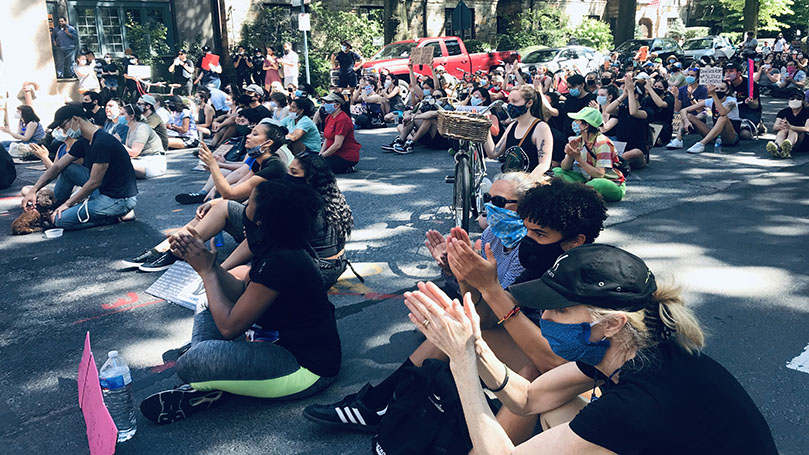
The Struggle Continues
The brutal police choke-hold murder of Eric Garner in Staten Island and the shooting of Michael Brown in Ferguson, Mo., sparked a broad grassroots, anti-racist movement calling for justice for all victims of police misconduct and murders, especially unarmed people of color.
The movement demanded democratic reform, starting with an end to racial profiling, holding police accountable, and rolling back their militarization. Better training in race relations and avoiding the use of deadly force were demanded. “Hands Up, Don’t Shoot” became the rallying cry dramatizing Mike Brown’s unarmed posture before he was shot and killed.
“Black Lives Matter” is basically a call for an end to racial profiling and for the police to respect the lives and rights of all people. It is part of the demand to put the focus on poverty and the real causes of crime rather than continuing to build more prisons and hire more police. The main victims of policies that promote incarceration are Black and Latino young men. Even if they survive the streets and prison, their lives and families are damaged. In some states ex-offenders are denied the right to vote, and since most employers won’t hire them, these former prisoners face a lifetime of unemployment and poverty.
Demonstrators called for special prosecutors to try cases of police murders, especially when district attorneys, whose first allegiance is to the police, failed to do so. The federal government was pushed to step in and use existing federal civil rights laws to bring justice to the victims and their families.
A New Moment
The development of this nationwide movement, mainly initiated by African American youth in Ferguson, activated large numbers of people of all races, nationalities, and ages. Like the Occupy movement and the Justice for Trayvon Martin movement, they marched at night for weeks. This tactic spread across the country. The core constituency were youth—black, brown, Asian, and white coming from the ghettos and barrios, along with high schools and college campuses.
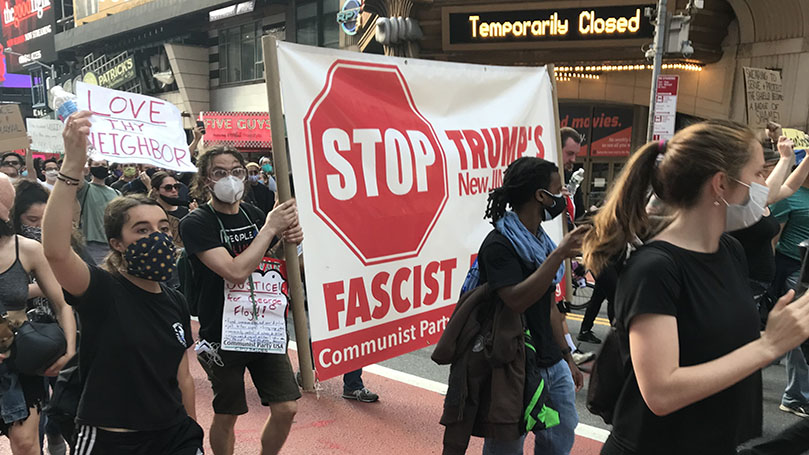
In Ferguson police used military weapons to disperse unarmed demonstrators. Yet every night for weeks these courageous, mainly African American youth kept on marching. State and federal governments were forced to speak out. The courage and fighting capacity of our youth gave the lie to talk about apathy and shows that the younger generation is political and progressive.
Despite irrefutable video evidence in Staten Island and a huge public outcry, including statements from then Attorney General Holder and President Obama, the district attorneys in both the Brown and Garner cases manipulated grand juries to avoid indicting the police. George Zimmerman, the killer of Trayvon Martin, had a trial that was widely considered a sham. But in the cases of policemen Darren Wilson (Ferguson) and Daniel Pantaleo (Staten Island), they were not even brought to trial! In response, marches grew larger and more militant. The families of the victims called for peaceful demonstrations, and for the most part, despite police provocations and misleading media images, protests remained overwhelmingly so.
The New York City Story
In response to the murder of Eric Garner, thousands of demonstrators again hit the streets night after night for many weeks, blocking traffic, including on main highways. These actions reminded me of the level of mass protest at the height of the Civil Rights and anti–Vietnam War struggle in the 1960s and 1970s. Mayor De Blasio supported the right of demonstrators to protest peacefully, including the right to carry out acts of civil disobedience. There were some incidents and arrests, but for the most part the NYPD, under orders from the mayor, were restrained.
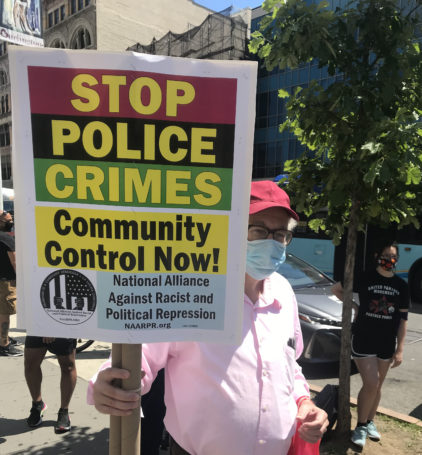 This movement was broad and united people of differing political views. Every action taken, every experience, if history is any judge, helped undermine racism and raise political consciousness. Many of the newly activated were not just looking at the racist policies of NYPD and other police forces and public officials, but also at structural racism on all levels. Growing numbers see inequality as systemically tied to the capitalist system.
This movement was broad and united people of differing political views. Every action taken, every experience, if history is any judge, helped undermine racism and raise political consciousness. Many of the newly activated were not just looking at the racist policies of NYPD and other police forces and public officials, but also at structural racism on all levels. Growing numbers see inequality as systemically tied to the capitalist system.
Millions of people of good will from communities, campuses, churches, mosques, temples, and unions from all walks of life were disappointed and angered that neither of the white policemen involved in the killing of Garner and Brown was indicted and brought to trial.
This included professional athletes and well-known figures in the mass media. Basketball players warmed up in “I Can’t Breathe” T-shirts to commemorate the last words of Eric Garner as he died in Daniel Pantaleo’s illegal choke hold. They understood that this was justice denied.
In reaction to the nationwide movement, extreme-right politicians, media, police, and police association officials launched an aggressive racist defense of the accused officers. That reaction showed that the demonstrations were having a major impact on public opinion.
Then there was another tragic turn in events in New York City. Two NYPD officers were shot dead while sitting in their patrol car in the Bedford Stuyvesant community of Brooklyn. Officers Wenjian Liu and Rafael Ramos were shot by a mentally ill Black man in the middle of New York’s largest Black community. This tragedy gave a green light to the most right-wing, racist opponents of democratization of the NYPD. No doubt thinking they would now have the public on their side, the right-wing stepped up their attacks, placing the blame on the mayor and the movement for police reform.
Patrick Lynch, Voice of Racism
Patrick Lynch, the head of the NY Patrolmen’s Benevolent Association (PBA), became another loud voice for racism. There are over 35,000 members of the NYPD, with 23,000 belonging to the PBA. Lynch launched a hate campaign against Mayor De Blasio. He called on his members to sign a pledge saying that if they are killed in the line of duty, they don’t want the mayor to speak at their funeral. Throughout the whole Garner struggle, Lynch became a loud voice defending the accused officers, even in the face of video evidence.
Lynch attacked the people marching for justice, Reverend Al Sharpton, and anyone who had spoken out. He actually claimed that Officer Pantaleo did not use a choke hold, causing Eric Garner’s sister to wonder whether Lynch and company had seen the same video everybody else saw.
Former Mayor Giuliani blamed Garner’s death on the victim because “he was overweight.” Besides, he said in one TV interview, this was not racism because one of the cops on the scene was an African American woman, and she did not speak out against what was going on.
Lynch went on to organize police to turn their backs on the mayor when he spoke at the funerals of the two slain officers. At the Police Academy commencement ceremony for new officers at Madison Square Garden, the PBA was able to organize another back-turning protest. They even organized a slow-down in issuing tickets and making arrests, hoping the tragedy would turn the public against De Blasio and the movement against police murders.
The mayor spoke at both funerals and personally visited the families in their homes. The families were receptive and called for peace on the streets and between the mayor and the PBA. The mayor also asked that demonstrations stop until after the funerals. Numbers were diminished, but people continued to demonstrate.
The murder of the two officers created a problem for the movement. Most movement leaders spoke out and expressed sympathy to the families and said that they were not against cops but against police misconduct.
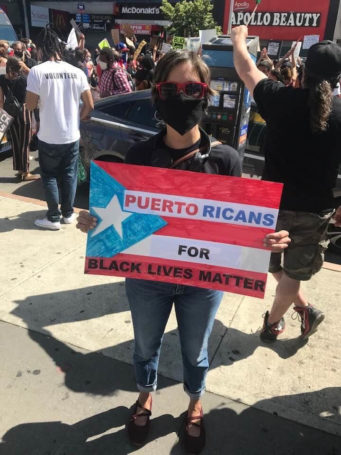 Basketball great Kareem Abdul Jabbar, in an article entitled “The Police Aren’t under Attack, Institutionalized Racism Is” (Time Magazine 12/24/14), got it right. Coming from a family of police officers, he called the deaths of the two officers a “national tragedy.” He went on to write, “We need to understand that their recent deaths are in no way related to the massive protest against systemic abuses of the justice system as symbolized by the recent deaths—also national tragedies—of Eric Garner, Akai Gurley, and Michael Brown.” “The killer wasn’t an impassioned activist expressing a political frustration,” argued Jabbar, “He was a troubled man.”
Basketball great Kareem Abdul Jabbar, in an article entitled “The Police Aren’t under Attack, Institutionalized Racism Is” (Time Magazine 12/24/14), got it right. Coming from a family of police officers, he called the deaths of the two officers a “national tragedy.” He went on to write, “We need to understand that their recent deaths are in no way related to the massive protest against systemic abuses of the justice system as symbolized by the recent deaths—also national tragedies—of Eric Garner, Akai Gurley, and Michael Brown.” “The killer wasn’t an impassioned activist expressing a political frustration,” argued Jabbar, “He was a troubled man.”
Police rebellions against elected mayors over charges of police racism, brutality, and killing happened before. They occurred under mayors John Lindsey, Abe Beam, Ed Koch, and David Dinkins. The police were able to mobilize public opinion on behalf of the accused officers, and they won. Ten thousand cops demonstrated against Dinkins, the city’s first Black mayor, in September of 1992, and Rudy Giuliani used the heightened racism and anti-crime hysteria to defeat Dinkins’ bid for reelection.
After all is said and done, it’s clear that Lynch was basically defending the “right” of the police department to practice the most repressive policies and practices. Policies like “stop and frisk,” which focused primarily on communities of color, brought out the most violent and bigoted behavior on the part of the police who had monthly arrest quotas. Communities were virtually under martial law. A reign of terror was directed at young men of color.
But Lynch was not without opposition. It appears he had a real problem among the membership of his own union and faced a challenge for leadership in reaction to his antics. Indeed, a membership meeting in Queens broke up in a shouting match over his insistence that the mayor needed to apologize; Lynch then withdrew the demand. In the end, only five percent of the PBA agreed to sign the pledge not to invite the mayor to speak at their funeral.
“War on Crime” or War on Poor Folks?
What was really behind these repressive measures? In fact, this was and remains a war on the poor. Authorities knew that high poverty contributes to increased crime rates.
Across the country there is a growing understanding that racist police methods and mass incarceration of black and brown people are really a way of terrorizing and controlling poor folks. They want to drive poor people out of their communities so real estate speculators can take over, gentrify neighborhoods, and make huge profits.
Millions have been victims of these policies. The fightback may start with the excesses and killings by the police, but to win fundamentally it must lead to a united labor and people’s movement fighting for economic and social justice.
This is beginning to take shape. It was important that the head of the AFL-CIO, Richard Trumka, went to Ferguson and put labor on the side of social justice there. Other union locals and internationals have done likewise. The United Federation of Teachers nationally and in New York was sharply attacked by PBA for acting in solidarity with the victims of police killings.
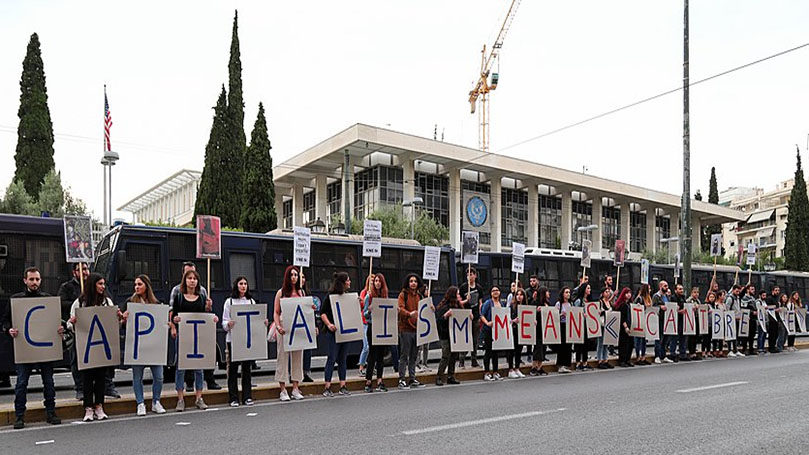
Real Reforms
What’s it going to take to really address the problem of police murder, and are the people ready to support real change, including structural changes in how police are policed?
Establishing real civilian controls over police behavior, for example, would be a great step forward. The Police Complaint Review Board in NY was not independent of the police. It’s basically set up and appointed by the cops. Complaints are reviewed and processed by them, and rarely is justice served.
As a result, people are forced to take complaints to court. Every year, the city of New York pays out tens of millions of dollars in settlements for police abuses.
That’s why establishing a civilian control board independent of the NYPD to investigate civilian complaints is necessary. As the police department is an agency of the state sworn to uphold the law, the NYPD must be held accountable for the actions of their employees and for the outcomes of their policies. Not everyone who passes a test and meets the physical qualifications makes a good officer. Bullies and people who exhibit openly bigoted and racist behavior should not be permitted to serve.
Disputes between police and civilians are not conflicts between individuals with equal power. As Prof. Michael Dyson has stated, the police have the power of the state behind them. They are vested with the enormous power to legally take away a person’s freedom, to harm people. Just as government meat or building inspectors need to be policed, the police need to be policed. A real civilian complaint board needs to have the right to appoint special prosecutors and have the ability to suspend, indict, and fire police who are abusers.
In light of the poverty and harsh conditions of life imposed on communities of color, the role that the police are ordered to play to try to maintain order without justice is problematic. “No justice, no peace” does not arise from nowhere—it’s a correct slogan that must be supported.
Stop the War on the Poor and Start Winning the War on Poverty
Since poverty is the root cause of crime, it must be reduced and eliminated. This issue needs to be at the center of the discussion. The elimination of poverty and social injustice is key to ending the crisis of crime. Economists are saying the United States is becoming a low-wage, high-poverty country. In New York City, according to the mayor, 47% of residents are at or near the poverty level. Most New Yorkers are non-white. This means that racism is felt most sharply by more than half the population.
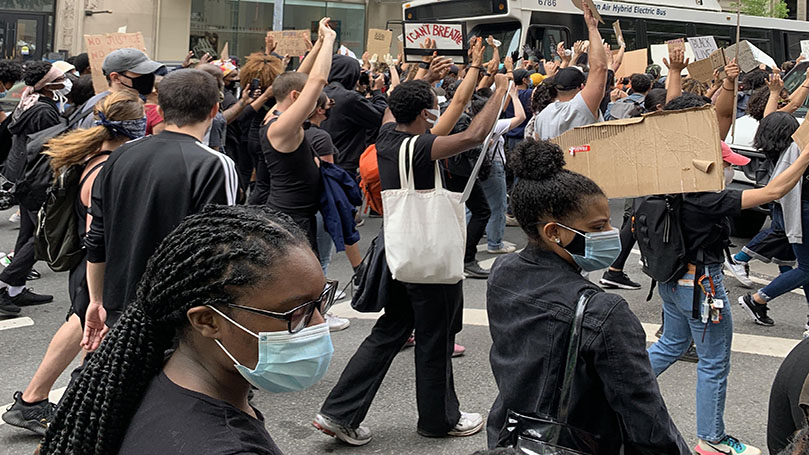
Current policies in low-income communities are to treat being poor as a crime. Therefore you criminalize and incarcerate the poor to control the poor. Want to eliminate homelessness? Eliminate poverty. To do that means turning communities of color into communities of quality affordable housing, schools, health care, and day care. It means decriminalizing undocumented workers and raising the minimum wage to a livable wage. It means rebuilding depressed urban and rural communities. Today’s low-income neighborhoods need clean and accessible mass transit. This program will help all working people, but affirmative action is needed to make sure that those now left behind will equally benefit.
When big business fails, the government helps them. We all remember when the banks were bailed out. The auto industry was bailed out. They call that help in the “national interest.” But when tens of millions of Americans are locked in the death grip of poverty for generations, the attitude is, “You are on your own” and “Get it together.”
These changes are possible only with a comprehensive enforcement of laws against all forms of discrimination, including racial profiling in both private and public sectors.
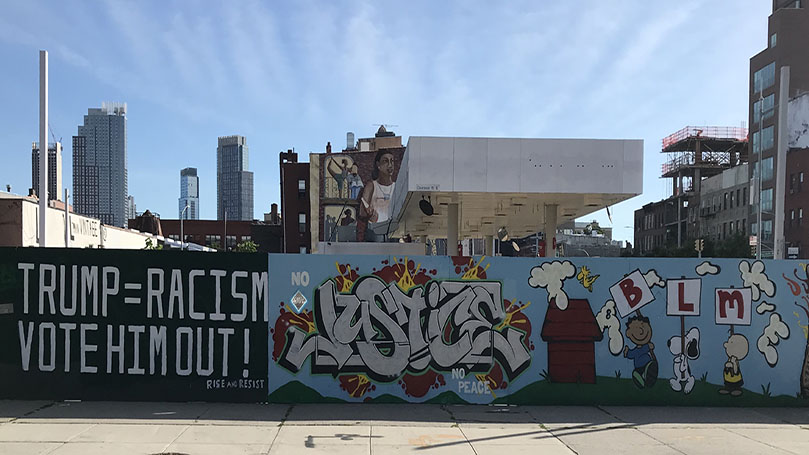
Where Will the Money Come From?
This program would be paid for by drawing down the US military presence around the world and pursuing a foreign policy of peace and negotiations. By taxing the rich and super rich and closing the trillions in tax giveaways in the form of loopholes, the gap between the ultra rich and the poor could be reduced and poverty alleviated. Yes, we need to sharply raise taxes on the rich.
Some will ask, “Is it worth it?” The bigger question is, can we afford the disasters of mass unemployment, mass incarceration, and underfunded schools?
All this social and economic dislocation and the resulting pain is about covering up the great flaws of the capitalist system. The system cannot meet the needs of all the people. Repression and terror happen to keep the dollars flowing to the 1%. A society that builds jails instead of affordable housing is a society in decay and on the path to chaos and economic collapse.
It’s time to end the war on the poor and begin the war on poverty.
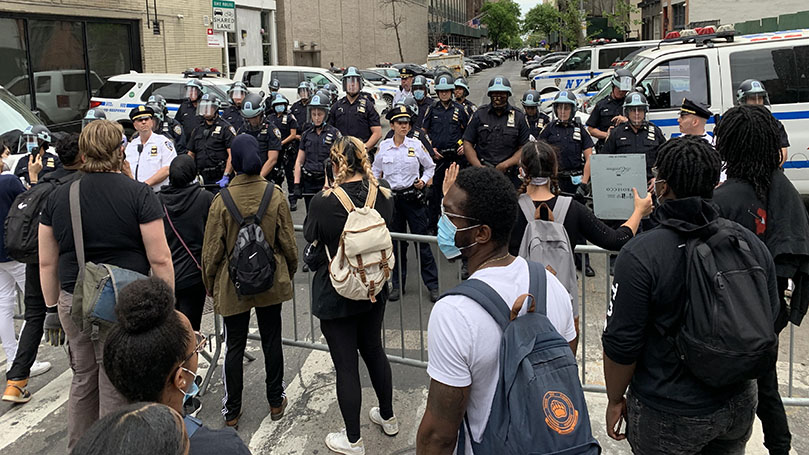
How Can This Be Won?
The award-nominated film Selma showed how voting rights were won. It reminds us of the revolutionary qualities of the fight against racism and for civil rights. This was a monumental struggle for freedom of African American people, and it advanced democracy for all.
The revolutionary process is not a sprint, but a marathon. Things can and do change; they do not stay the same. To say that we are making gains is not a call to slow down but to fight harder because we are getting closer to real freedom. Humanity is pushing forward. The pace of change depends on the size and unity of the progressive forces and the divisions in the ruling group.
The great battle today is focused on police crimes. But fundamentally it is the same battle that was fought in 1964 for voting rights. The chant “Black Lives Matter” could have been chanted in Selma. It is a call that all lives matter. There were those who argued that voting rights would never be won. They were wrong. The African American vote is now a critical and decisive part of all presidential races. Without the over 90% African American vote, Obama could not have won.
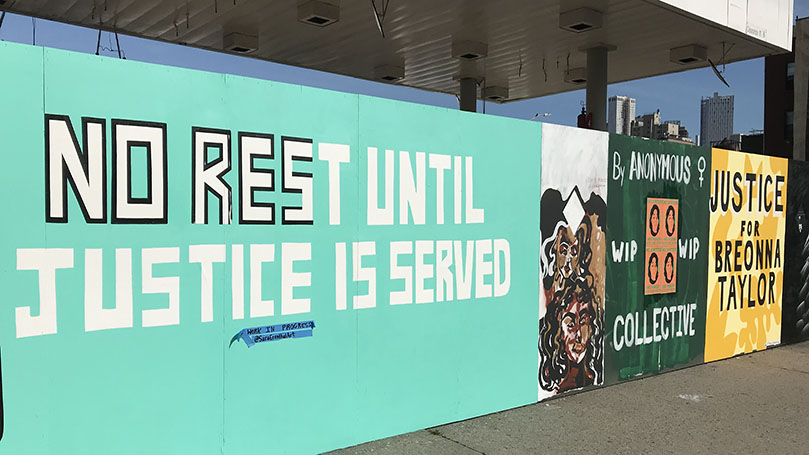
An Update
Since the writing of this pamphlet, the epidemic of police murders of unarmed people, particularly black men, has continued. But so has the broad grassroots anti-racist movement demanding justice.
In North Charleston, South Carolina, on April 4, 2015, Walter Scott, an unarmed 50-year-old African American worker, father of four and military vet, was shot eight times in the back while fleeing white policeman Michael Slager. Feidin Santana witnessed the murder of Scott and recorded it on his cell phone. After he heard officer Slager’s made-up version of events, he decided to make his video public. Officer Slager was arrested and charged with first-degree murder. This act of cold-blooded murder fueled a new wave of mass anti-racist demonstrations in North Charleston and around the country.
Eight days later on April 12 in West Baltimore, Freddie Grey was arrested for making eye contact with police and then running away. He was seriously injured, could not walk, and was thrown in the back of a police van while shackled. Once again, as in Staten Island and North Charleston, a bystander videoed his limp body being thrown into the van while Grey cried out in pain. After a rough ride in the police van, the critically injured Grey ended up in the hospital and died seven days later of severe spinal injuries. For days after, the streets of Baltimore were full of mainly young people demonstrating.
Since then, the police killings have continued, as have the protests. But 2020 is different. Demonstrations are occurring all over the country, in cities and small towns alike, even around the world. The protesters are mostly young, but of all ages. They are people of color; they are white. Expressions ranging from modest sympathy to righteous anger are being heard from all quarters of society. People are demanding systemic change, and they want it now. Until justice is done, the struggle will continue.
No justice, no peace!

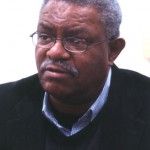
 Join Now
Join Now